Sarcophagus Of The Amazons: Etruscan Coffin With Paintings Of Dynamic Fighting Scenes Of Greeks With Amazons
A. Sutherland - AncientPages.com - The Sarcophagus of the Amazons is a large Etruscan sarcophagus of an unknown artist, dated back to the third quarter of the 4th century BC and preserved in the National Archaeological Museum of Florence.
It is a rare example of an ancient painting still preserving much of its extraordinary freshness. However, the restorations conducted in 2007 also contributed to the coffin's appearance.
The sarcophagus of the Amazons. Image credit: National Archaeological Museum Florence. Source
The painted alabaster sarcophagus dates to the 4th century BC (c. 350-325 BC). The four sides of it are decorated with polychrome paintings depicting various dynamic fighting scenes of battling Greeks and Amazons. The beautiful artifact represents an ancient Greek tradition of Amazonomachy, struggling between Greeks and the Amazons, illustrated with great variety: on horseback, on foot, on the chariot, etc.
Some brave women are winning, but others must die in this terrible fight. Those who fought the Amazons were Achilles, Bellerophon, Dionysus, Theseus and Heracles.
The sarcophagus of the Amazons". Image credit: ArchaiOptix - CC BY-SA 4.0
According to Stanford's Adrienne Mayor, a research scholar in the Department of Classics, these warrior women actually existed. In her new book, " The Amazons: Lives and Legends of Warrior Women Across the Ancient World," Mayor explains the real world and history behind the folklore of the Amazons.
"Amazons were modeled on stories of self-confident women of steppe cultures who fought for glory and survival and enjoyed male companionship," but, as Mayor puts it, "on terms that seemed extraordinary to the ancient Greeks."
"The popularity of Amazon stories and images suggests that Greek women and men enjoyed imagining heroes and heroines interacting as equals and seeking adventure and glory in hunting and battle."
A Greek fighting an Amazon. Detail from painted sarcophagus found in Italy, 350-325 BC.Image credit: Sailko - CC BY-SA 3.0
The Sarcophagus of the Amazons" – with dimensions; 71cm x 194 cm x 62 cm - was unearthed in the Etruscan town of Corneto (now Tarquinia, Italy) in 1869. Once, there was also another similar coffin (but without paintings), which was later lost.
Researchers believe the artifact was manufactured in Greece and shipped to Italy, still semi-finished. Its origin is certainly Greek or Magna Grecia (the Italian Mediterranean peninsula formerly colonized by the Greeks starting from the eighth century BC).
The Greek artisans used the white limestone alabaster stone, a type that does not exist in Etruria, and other decoration features that have no comparison in the Etruscan context.
On the sarcophagus, there are two inscriptions in Etruscan language: a large one on the slope of the lid bears the name of the deceased "Ramtha Huzcnai" (TLE ^ 2 122); the other also bears her name with a few additions and is located on one of the long sides of the chest.
But it is worth noting that the Etruscan scribe did not bother to engrave the paintings.
Fragment of terracotta amphora (jar) dated to 530 BC. Hercules is fighting the Amazon queen Hippolyte. Image credit: Bateman Group - Metropolitan Museum of Art.
Amazonomachy was expressed visually in more than 300 Greek vase paintings and sculptures.
The "Sarcophagus of the Amazons" gives us glimpses from the battlefield and the young Amazons involved in furious confrontations with the Greek warriors.
"One panel shows an Amazon in a short, belted tunic and trousers, described by archaeologists as young, bold, and powerful with a typical "pathetic-indignant" expression, rides a white horse with blue eyes. She turns to slash with her sword at an armored Greek with a spear. Another mounted Amazon wears a tunic, a Phrygian cap, trousers, boots, and leopard skin.
"Two pairs of Amazons in chariots drawn by four white, blue-eyed horses attack two Greeks on foot while another two Amazons prepare to slay a Greek on his knees between them. Two scenes of fallen Amazons, painted with particular tenderness and empathy, stand out because the women are nude.
"One has sunk to her knees, blood pouring from a spear wound, "pain and despair" in her face. The other nude warrior has fallen onto her shield while her attacker drags her up by the arm and is about to deal a death blow with his sword…" 1
While looking at the sarcophagus, it is important to stress that according to experts, the artisans and their workshop must have been of Hellenic culture.
However, they were not of Greek origin due to some minor though characteristic details regarding, for example, the harnesses of the participating horses.
Written by – A. Sutherland - AncientPages.com Senior Staff Writer
Updated on January 25, 2024
Copyright © AncientPages.com All rights reserved. This material may not be published, broadcast, rewritten or redistributed in whole or part without the express written permission of AncientPages.com
Expand for references- Mayor, A. The Amazons
Did The Amazons Really Exist? – Truth Behind Myths Of Fierce Female Warrior
More From Ancient Pages
-
 Anglo-Irish Explorer Shackleton’s Ship The Quest Found Off Canada’s Coast
Underwater Discoveries | Jun 13, 2024
Anglo-Irish Explorer Shackleton’s Ship The Quest Found Off Canada’s Coast
Underwater Discoveries | Jun 13, 2024 -
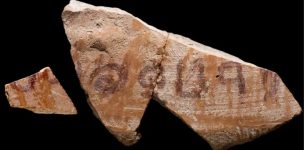 Rare 3,000-Year-Old Jerubbaal Inscription Of Biblical Judge Discovered In Israel
Archaeology | Jul 14, 2021
Rare 3,000-Year-Old Jerubbaal Inscription Of Biblical Judge Discovered In Israel
Archaeology | Jul 14, 2021 -
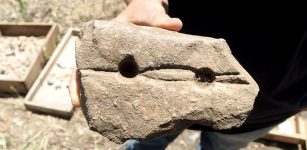 Stone Slab c. 9,000-Year-Old Used In Making Fire Discovered Not Far From Jerusalem, Israel
Archaeology | May 17, 2017
Stone Slab c. 9,000-Year-Old Used In Making Fire Discovered Not Far From Jerusalem, Israel
Archaeology | May 17, 2017 -
 Graeae: Three Sisters Of Fate Who Shared One Eye And Tooth In Greek Mythology
Featured Stories | Jun 8, 2016
Graeae: Three Sisters Of Fate Who Shared One Eye And Tooth In Greek Mythology
Featured Stories | Jun 8, 2016 -
 Beer ‘Chicha’ Helped To Keep Peruvian Wari Empire Stable – New Study
Archaeology | Apr 23, 2019
Beer ‘Chicha’ Helped To Keep Peruvian Wari Empire Stable – New Study
Archaeology | Apr 23, 2019 -
 History Of Jarlshof – Thousands Of Years Of History With Traces Of Picts, Vikings And Scots
Featured Stories | Jun 4, 2020
History Of Jarlshof – Thousands Of Years Of History With Traces Of Picts, Vikings And Scots
Featured Stories | Jun 4, 2020 -
 Mountain Meadows Massacre: Real Burial Sites Are Far From The LDS Monument’s Location
News | Sep 21, 2015
Mountain Meadows Massacre: Real Burial Sites Are Far From The LDS Monument’s Location
News | Sep 21, 2015 -
 Pharaoh Ay – A Man With A Hidden Agenda Or A Victim Of Unfortunate Circumstances?
Featured Stories | Feb 5, 2019
Pharaoh Ay – A Man With A Hidden Agenda Or A Victim Of Unfortunate Circumstances?
Featured Stories | Feb 5, 2019 -
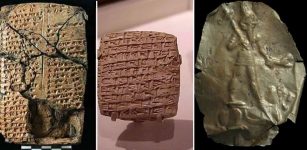 Kültepe: Once Part Of The Kingdom Of Hittites And The Center of a complex network of Assyrian trade colonies in the 2nd millennium B.C.
Civilizations | Oct 16, 2015
Kültepe: Once Part Of The Kingdom Of Hittites And The Center of a complex network of Assyrian trade colonies in the 2nd millennium B.C.
Civilizations | Oct 16, 2015 -
 On This Day In History: Battleship USS Maine Explodes And Sinks – On Feb 15, 1898
News | Feb 15, 2017
On This Day In History: Battleship USS Maine Explodes And Sinks – On Feb 15, 1898
News | Feb 15, 2017 -
 Humans Lived In Rainforests At Least 150,000 Years Ago In Africa
Human Beginnings | Feb 27, 2025
Humans Lived In Rainforests At Least 150,000 Years Ago In Africa
Human Beginnings | Feb 27, 2025 -
 Full-Sized Model Of Noah’s Ark Created In The U.S. To Show People The Evolution Theory Is False
News | Oct 20, 2022
Full-Sized Model Of Noah’s Ark Created In The U.S. To Show People The Evolution Theory Is False
News | Oct 20, 2022 -
 More Than 27,000 Artifacts Illegally Collected By ‘Expert In Archaeology’ – Seized In France
Artifacts | Dec 18, 2020
More Than 27,000 Artifacts Illegally Collected By ‘Expert In Archaeology’ – Seized In France
Artifacts | Dec 18, 2020 -
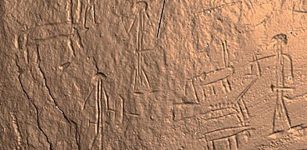 Ancient Rock Engravings Unveil Intriguing Insights Into Human Cultures
Archaeology | Jul 4, 2023
Ancient Rock Engravings Unveil Intriguing Insights Into Human Cultures
Archaeology | Jul 4, 2023 -
 Researchers Find Oldest Evidence Of Human-Caused Lead Contamination In Aegean Region
Archaeology | Feb 4, 2025
Researchers Find Oldest Evidence Of Human-Caused Lead Contamination In Aegean Region
Archaeology | Feb 4, 2025 -
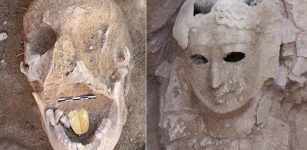 Ancient Egyptian Mummies With Golden Tongues Discovered In Alexandria
Archaeology | Feb 3, 2021
Ancient Egyptian Mummies With Golden Tongues Discovered In Alexandria
Archaeology | Feb 3, 2021 -
 Remains Of Medieval Port Discovered In Eindhoven
Archaeology | Nov 17, 2020
Remains Of Medieval Port Discovered In Eindhoven
Archaeology | Nov 17, 2020 -
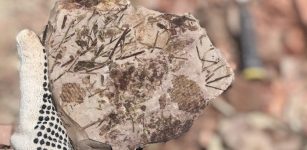 Long-Lost Paleontological Site With More Than 100 Unique Fossils Re-Discovered In Brazil
Archaeology | Jul 4, 2022
Long-Lost Paleontological Site With More Than 100 Unique Fossils Re-Discovered In Brazil
Archaeology | Jul 4, 2022 -
 Etowah Indian Mounds: A Legacy Of The Ancient Mississippian Culture
Featured Stories | Oct 9, 2018
Etowah Indian Mounds: A Legacy Of The Ancient Mississippian Culture
Featured Stories | Oct 9, 2018 -
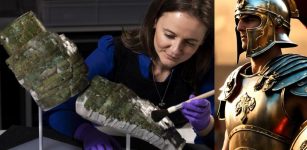 Extremely Unique Ancient Roman Arm Guard Found At Trimontium Fort – Restored And On Display For The First Time Ever
Archaeology | Jan 22, 2024
Extremely Unique Ancient Roman Arm Guard Found At Trimontium Fort – Restored And On Display For The First Time Ever
Archaeology | Jan 22, 2024




